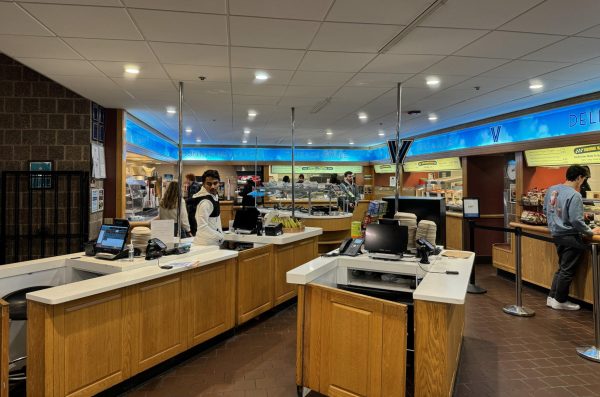Beverage ads flood Super Bowl XXXVII
January 30, 2003
Both sides of players look on as the referee carefully reviews a disputed play. This seems to be an accurate description of the Super Bowl, except that the two sides that were looking on were the Anheuser-Bush Clydesdales, and the referee was a zebra?
That is the scene not during the game, but during the TV timeout, as it was the first of the eleven Anheuser-Bush commercials that broadcasted across the screen this past Sunday. This scene set up what is considered one of the largest spectacles of the Super Bowl: the commercials.
Some of the most alluring aspects of the Super Bowl are the new ad campaigns presented by some of the largest companies in the United States. Huge conglomerates such as Pepsi, Anheuser-Busch and General Motors took advantage of the tremendous viewing audiences that tunes into the Super Bowl every year. The Super Bowl provides companies like these with a unique advertising opportunity where they can win over new customers and regain old ones.
However, companies must be willing to pay a steep price to advertise during the nation’s largest sporting event. This year, Super Bowl XXXVII generated advertising revenue of close to $2.2 million for a 30 seconds of airtime, as opposed to $1.9 million just a year ago. This increase, combined with the floundering economy, put even more pressure on the companies for a big hit. With 130 million estimated viewers watching, there was a potential for a windfall of customers. The audience brought in a windfall of new customers.
Anheuser-Bush paid $24.2 million for the chance to convince consumers to buy more of their beer. Anheuser-Busch has been a long-time contributor to the advertising revenues created during the Super Bowl, dating back to the fan favorite “Bud Bowl.” The country’s largest brewer, Anheuser purchased control of the beer advertising market during the Super Bowl. The only beer ads that were shown during the Super Bowl were those for Budweiser or Bud Light. Other prominent brewers, like Miller and Coors, were not able to run their new popular beer campaigns containing catfights and the ever-popular cheerleading twins. Anheuser-Busch not only paid the advertising fees that go along with outsourcing advertising firms, but they also paid the NFL for the exclusive right to have the only beer ads during the game.
Miller and Coors have been working hard to compete with Budweiser in the market, despite Budweiser’s advantage in Super Bowl ads. Coors, for example, has taken a different approach to attracting football fans by becoming the official beer of the NFL, holding the rights to the Super Bowl logo and the logos of all 32 teams. The fierce competition between these top U.S brewers can be attributed to the lagging demand in the domestic beer market. It is now crucial for the top beer producers to take customers away from competitors to boost their own sales.
Expect to see a continuation of this advertising war in future Super Bowls, with more focus on the core consumers. Within every advertising campaign, it is difficult to see direct benefits in sales and revenues compared to the price paid for advertising. The bottom line for Anheuser-Busch, Coors, Miller and every company advertising during the Super Bowl, is to increase earnings and market share and keep their companies expanding. As the economy sits in the basement and the nation prepares for war, advertisers can only hope that they will realize a return on their investment by stirring people out of their homes and into stores of retailers.










